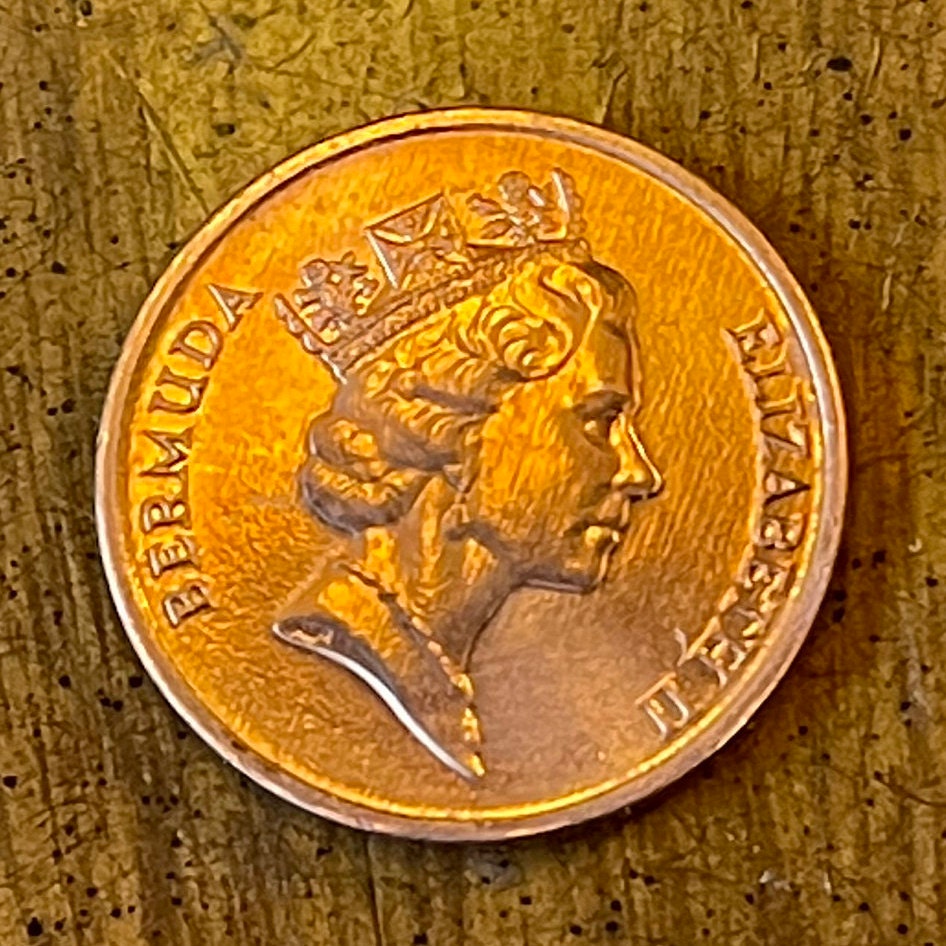elemintalshop
Wild Boar Bermuda 1 Cent Authentic Coin Money for Jewelry and Craft Making (Hog Money) (Pig Penny)
Wild Boar Bermuda 1 Cent Authentic Coin Money for Jewelry and Craft Making (Hog Money) (Pig Penny)
Couldn't load pickup availability
Wild Boar Bermuda 1 Cent Authentic Coin Charm for Jewelry and Craft Making (Hog Money)
Obverse
Crowned head of Queen Elizabeth II facing right
Lettering:
BERMUDA ELIZABETH II
Reverse
Wild boar left
Hog money
* Bermuda's first coins were called 'hog money' - after the wild boars found roaming here by the first settlers;
* They were the very first English colonial coins;
* Also called 'Sommer Islands coins', the currency arrived in England in 1616 to pay workers employed by the Bermuda Company;
* Minted in shilling (twelvepence), sixpence, threepence and twopence pieces, the coins bore the image of a hog on one side, a sailing ship on the other;
* Made of copper, some were silver-plated to make them more appealing to settlers, who preferred English and Spanish gold and silver;
* The coins were unpopular and vanished from circulation around 1650.
Hogs played a key role in Bermuda's early development and their story is eloquently told in the book 'Five Centuries' by Rosemary Jones.
The first hogs to live in Bermuda were said to have been sent ashore by Spaniard Commander Don Pedro Menendez de Avila who, in 1563, apparently landed here in search of his shipwrecked son.
Unable to find him, Commander Menendez continued on to Florida - leaving hogs on the island as a food source in case they were to be shipwrecked in Bermuda on the way back.
The island's palms, which produced a wild berry, provided sustenance for the hogs to flourish. A few decades later, the Sea Venture was making its way to Jamestown when it was shipwrecked on Bermuda. Relieved to find the hogs that had been left behind, the castaways hunted wild hogs using the ship's dog to track them - saving them from starvation.
Some expeditions brought back 30 pigs in a week; the meat was salted to keep it preserved.
((N.B. Shakespeare's play The Tempest was inspired by this shipwreck on Bermuda))
On May 10, 1610 - nearly 10 months after the Sea Venture wreck, ships 'Deliverance' and 'Patience' set sail from Bermuda and two weeks later the ships reached Jamestown. They found a sorry bunch of starving settlers when they got there.
Of the 500 original settlers at James Fort, just 60 had survived famine and disease of the 1609-1610 winter. The crew of Deliverance and Patience handed out salted hog and fish from Bermuda to the weary settlers.
Some historians suggest that without the large stock of fresh foods and animals brought by Sir George and his companions from Bermuda, Virginia would have been wiped out.
Sir George Somers's famous map of Bermuda included a representation of two men hunting wild hogs.
Compiled by Helen Jardine. Source: 'Five Centuries' by Rosemary Jones.
http://bermudasun.bm/Content/NEWS/News/Article/History-of-the-hogs/24/270/39594
Share



















